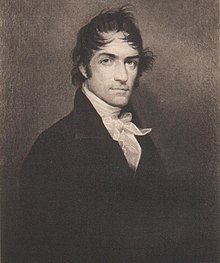Harmanus Bleecker | |
|---|---|
 | |
| U.S. Minister to the Netherlands | |
| In office 1837–1842 | |
| Preceded by | Auguste Davezac |
| Succeeded by | Christopher Hughes |
| Member of the New York State Assembly from Albany County | |
| In office 1815–1816 Serving with Sylvester Ford, Jesse Tyler, John D. Winne | |
| Preceded by | Johan Jost Dietz, Moses Smith, John L. Winne |
| Succeeded by | Michael Freligh, John I. Ostrander, John Schoolcraft, Jesse Smith |
| Member of the New York State Assembly from Albany County | |
| In office 1814–1815 Serving with Johan Jost Dietz, Moses Smith, John L. Winne | |
| Preceded by | David Bogardus, John Gibbons, Elishama Janes, Abraham Van Vechten |
| Succeeded by | Sylvester Ford, Jesse Tyler, John D. Winne |
| Member of the U.S. House of Representatives from New York's 7th district | |
| In office March 4, 1811 – March 3, 1813 | |
| Preceded by | Killian K. Van Rensselaer |
| Succeeded by | Abraham J. Hasbrouck |
| Personal details | |
| Born | October 9, 1779 Albany, New York |
| Died | July 19, 1849 (aged 69) Albany, New York |
| Citizenship | |
| Political party | Federalist |
| Other political affiliations | Free Soil (1848) |
| Spouse | Sebastiana Cornelia Mentz Bleecker (m. 1842-1849, his death) |
| Profession | Attorney, teacher, ambassador |
Harmanus Bleecker (October 9, 1779 – July 19, 1849) was an attorney in Albany, New York. A Federalist, he is most notable for his service as a member of the New York State Assembly, a United States representative from New York, and Chargé d'Affaires to the Netherlands.
Born in Albany in 1779, Bleecker belonged to an old Dutch family that had lived in Albany since the 1600s. He was educated in Albany, and learned to speak the Dutch language. After studying in the private law office of two established attorneys, Bleecker attained admission to the bar in 1801, and began a practice in Albany. He became a highly regarded lawyer and teacher, and many men who went on to prominent legal and business careers learned the law under his tutelage. He was also active in numerous business ventures, including banks and canal construction and operation.
In 1810, Bleecker won a seat in the U.S. House. He served in the 12th United States Congress (March 4, 1811 to March 3, 1813). Bleecker did not run for reelection in 1812, and resumed practicing law. In 1814 and 1815 he served in the New York State Assembly, where he worked with Governor Daniel D. Tompkins to provide funding for New York troops taking part in the War of 1812.
In 1837, Bleecker took office as Chargé d'Affaires to the Netherlands, appointed by longtime friend Martin Van Buren, who shared Bleecker's interest in the Dutch language and culture. He served until 1842, after which he resumed practicing law in Albany. Bleecker took part in numerous philanthropic and civic endeavors, including the establishment of several Albany-area hospitals and oversight of several universities. He died in Albany in 1849, and was buried at Albany Rural Cemetery.
Bleecker married late in life, and had no children. After her death in 1885, his widow honored his request to leave his fortune for the benefit of the citizens of Albany. The money was used to construct Bleecker Hall, a library and theater. The association responsible for the institution later sold Bleecker Hall, and then constructed Harmanus Bleecker Library, a building that was used solely as a library. Bleecker Library was later redeveloped as private offices, and is now listed on the National Register of Historic Places